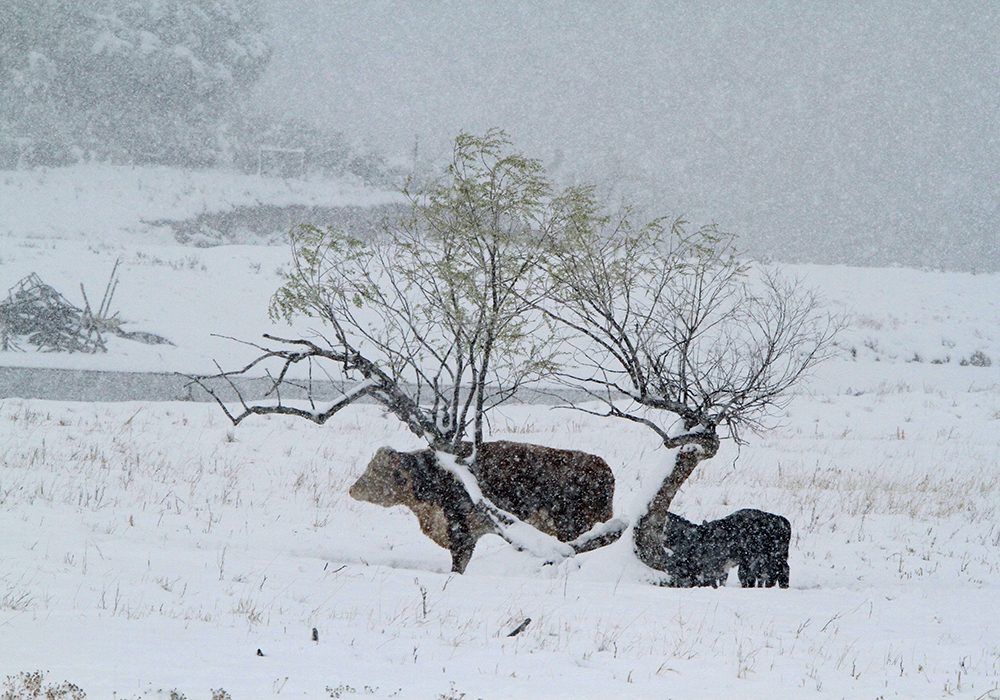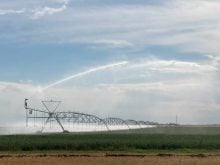A blessing for some. A headache for others.
That’s how farmers and ranchers in Saskatchewan and Manitoba describe a spring storm that dropped heavy snow across a large chunk of the region last week.
“It’s crazy,” said Bev Pirio, whose family farms near Radville, Sask., about 140 kilometres south of Regina.
“It’s more snow than we’ve had in I don’t know how many years, especially in a spring storm.”
In an April 21 interview, Pirio said she and other farmers in the Rural Municipality of Laurier received 45 to 60 centimetres of wet snow on April 19-20.
Read Also

New program aims to support plant-based exports to Asia
Understanding the preferences of consumers in Taiwan and how they differ from Indonesia or Malaysia isn’t easy for a small company in Saskatchewan.
Snowfall amounts varied across Saskatchewan and Manitoba but the heaviest accumulations were in southeastern Saskatchewan, in an area south of the Trans-Canada Highway, between Regina and the Manitoba border.
According to Environment Canada, Regina received more than 20 cm, Qu’Appelle got 37 cm and Weyburn got 60 cm.
Saskatchewan’s Water Security Agency is monitoring runoff in southeastern Saskatchewan along water levels in creeks and rivers. It said last week that the risk of flooding on the Souris and Qu’Appelle rivers was low. However, some localized flooding could occur because of last week’s snowfall.
Accumulations were generally lower in southwestern Manitoba than they were in southeastern and south-central Saskatchewan.
Most communities north and east of Saskatoon received 10 to 20 cm. Other communities to the north and west of Saskatoon missed the snowfall completely.
Pirio said most grain farmers in south-central and southwestern Saskatchewan will welcome the extra moisture.
“We’re certainly not going to complain … because we’re coming off a four-year drought,” she said.
While many grain farmers welcomed the precipitation, others were not as impressed.
Many cattle producers in Saskatchewan and Manitoba were still in the middle of calving last week and with more than 30 cm of wet snow in many areas, the risk of disease and calving losses mounted.
Councillors in some rural municipalities have designated their RMs as local disaster areas, a move that should allow livestock producers with uninsurable losses to access financial assistance under the Provincial Disaster Assistance Program (PDAP).
Ursula Scott, assistant administrator at the RM of Laurier, said the spring storm is a blessing and a curse.
“It’s a blessing because it has been very dry in this area and the water reserves have been getting really low,” she said.
But for cow-calf producers, the next couple of weeks will be difficult, Scott added.
Pirio said the storm will likely delay spring seeding in the Radville area by at least two weeks.
“We would normally start seeding around the end of April,” she said.
“We were already a little bit delayed this year because we just didn’t get the heat units this spring … but now we’re probably looking at two weeks or more. We’ll take the extra bushels if Mother Nature is willing to give them to us.”
Matt Struthers, crop extension specialist at Saskatchewan Agriculture, said the storm will present challenges for cattle producers.
“It’s obviously going to be a bit rough on them and rough on their calves, so hopefully they’ll get through this as best as they can,” Struthers said.
He said grain growers across southern Saskatchewan will expect a good start to spring seeding, even if things are a bit late.
Monty Reich, general manager of the South West Terminal (SWT) at Gull Lake, Sask., expressed similar sentiments.
“From an overall moisture level, we’re in a really, really good spot compared to where we’ve been the last five, six, seven years,” he said.
SWT, which operates farm retail outlets throughout southwestern Saskatchewan, said grain growers in many parts of its service area would normally be well into seeding by mid-April.
This year, very little, if anything, is likely to be seeded until the first week of May, said Reich.
In southwestern Manitoba, Anita Renwick, an agronomist and owner of A1 Agronomy in Melita, Man., said snowfall around Melita was low compared with areas further east and west.
By her estimate, between five and 10 cm of wet snow fell in the Melita area.
“As far as seeding goes, I think we’ll be a good week or 10 days into May (before) we see any action…,” Renwick said.
For some growers in southern Manitoba, May 15 would be a more reasonable start date for seeding, she added.
“It’s going to depend on what happens (with the forecast).”
Renwick said growers in her area weren’t hurting for moisture but probably weren’t disappointed to receive more.
“We wouldn’t say ‘no’ to more moisture but we weren’t totally hurting for it either,” she said.


















